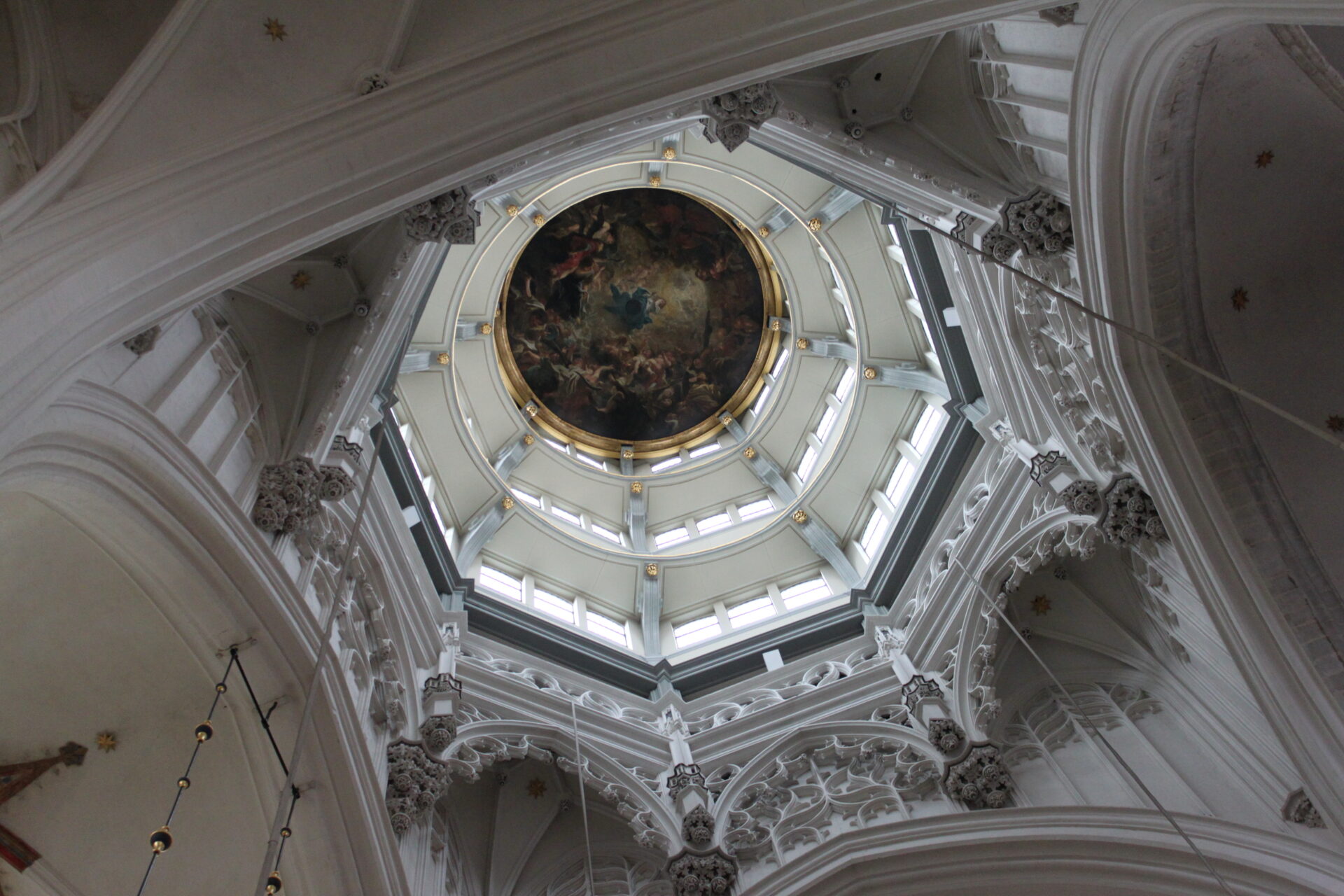
It’s funny how we’ve shared here Brussels and Bruges, what we saw and what we learned, but haven’t yet shared our experiences visiting Antwerp, Belgium. In truth, Antwerp, Belgium was the entire reason for the trip! “Dad” had a business trip there, so “Mom” (me) went along, able to use some airline benefits to make the trek.
I am not sure Antwerp would have been our first choice of places to stay. Although it is the second largest city in Belgium next to Brussels, it is a city for living and working, not necessarily for sightseeing. Whereas Bruges exists primarily on the backs of tourist dollars, and Brussel’s historic district is suspended in time, Antwerp is a peek into how a modern European city actually functions, how it continues trade and industry around history.

This isn’t to say, of course, that Antwerp isn’t peppered with beauty and history. There is still a Grote Market and, nearby, the Cathedral of Our Lady (more later) shines over all. But navigating Antwerp on my own, as my husband was busy manning a booth for work, felt more like taking a tram filled with office-workers out to a suburb at the end of a 9-to-5. Or walking past large, designer shops (a la Park Avenue) to discover Rubens’ house.


Antwerp is no slacker as far as modern cities go. It is known as the diamond capital. According to Wikipedia, as late as 2012, over 84% of the world’s diamonds passed through Antwerp for cutting and polishing, making it a $54 billion business. This city housed one of the first stock exchanges (built in 1531 and not emptied until 1997). In the 1920s it hosted the Olympics.
Everything about Antwerp oozes money and prestige. Even the train station, on which construction was started in 1895, is impressive. There is a reason why it stuns first-time visitors and why it has won accolades and awards.


Since this was a work trip, we were housed in the Hilton in Old Town Antwerp. As with all Hiltons, this was well-decked and clean, but the real thing going for it was its location.
My first day of exploring, I walked the streets of Antwerp, just taking in the sights. I saw how history nestled alongside industry (Antwerp is one of the busiest ports still today).

I also tried to use my hotel-issued map to navigate my way through ancient, meandering streets that moved through the city no discernible plan to find the house of Rubens.

When I studied abroad in London as a college kid, it was in the museum of art there that I fell immediately in love with Peter Paul Rubens art. (Daniel in the Lion’s Den moves me to tears to this day.) It wasn’t until I arrived in Antwerp that I realized I had stumbled into the city he lived and loved and worked.

Entering the house, I bought tickets and took my time walking through. The house today is a beautiful blend between a museum honoring the influential painter and a preservation of how the house would have looked when he owned it. Rather than bedecked solely in Rubens’ masterpieces, it mingles those with artworks by Rubens’ contemporaries, art that he chose to own and display himself.



Later in the trip, I, of course, had to make my way through the large, looming cathedral. While the cathedral had bountiful open hours, I had decided to wait to take the one English-speaking tour offered that day. I feel as though seeing landmarks such as these is infinitely more rewarding when a docent puts things into historical perspective and tells the stories that define the life of the space.

It turns out that I was the only one on the tour and it was such a memorable experience. I was told the story of the Rubens paintings bequeathed to the church; the significance of the other paintings; the church’s story of near-abandonment and barnyard use; why the odd modern statue sits in front.



If any cathedral in the world represents how men thought (think?) that to show glory to God the church must be a glorious structure full of riches and awe, this is it.






To complement all the downtown walking I did, one afternoon I decided to head out to the De Koninck Brewery. Getting there involved a tram/subway and some incredibly vague directions from the hotel staff (‘Oh, you will see the place off the tram so just get off there.’). This was so entirely different from the experience we had beer tasting in Bruges, I am glad I went.

I am not entirely sure what possessed me to go (I am not a huge fan of beer), but this was an independent walk-through, highly modernized and media-reliant tour. I was the only person going through at the time and especially enjoyed the presentation on stemware. As shared before, Belgium is a beer culture, and De Koninck, with its lengthy history, has clearly been part of that for centuries.

We did not have any amazing culinary experiences in Antwerp, I have to say. We didn’t eat poorly, of course, but really our time in Antwerp was less about the bellies and more about the lifestyle.

It was a fantastic opportunity to view “real life” in a European city – a life where business and daily requirements have expertly weaved themselves around a fabric of ancient cathedrals and castles.



Each of the three Belgian cities we had the fortune to see were so unique. For a country not very large, there is much diversity in style and ambiance. Being in Antwerp reminded me that while we can travel the world, marking things off our checklist and basking in World Heritage Sites, real people live and conduct their daily routines in the shadows. Which building in Antwerp today, what did I walk by without noticing, had amazing human moments happening right under my nose…in real time?
Last Updated on June 29, 2018 by Mrs. Family Trip
